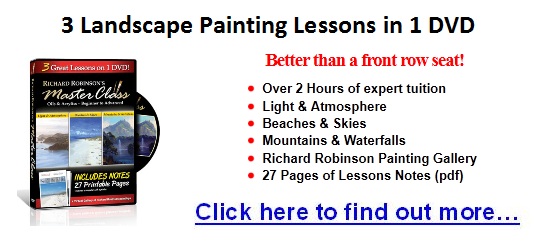Learn the Best Times to Use Photographic Reference
Painting portraits and landscapes can be difficult enough when painting from life. Photographs can make things easier, without using them as a way to “cheat”. The best times to use photos for reference are really up to you, as the artist, but they are particularly useful when painting portraits and landscapes, or anything that will not stay the same for the duration of the time that you are painting. Models may have to leave for most of the day. The weather may change, and shadows will move during the course of a day while painting a landscape. A great time to use photographic reference is when you’re having difficulty drawing faces. Simply turn the photograph upside down and pay attention to the shapes and colors that you see. Don’t try to see the face, on the contrary, ignore it! The idea is to paint what you really see, not what you think you see. Turning the photo upside down helps to remove the distracting preconceptions that most people have about faces, and how to draw them. When you’ve finished drawing or painting the image from the photograph, turn your artwork back around. Many people who don’t consider themselves to be good artists at all are often surprised by the quality of their own drawing by the end of the exercise. If you are on holiday and want to paint something that you will only be able to access in person for a short period of time (such as the Eiffel Tower or the Pyramids of Giza, or even a simple landscape or every day sight that catches your eye) then often the one and only option is to take photographs of it. Remember to snap shots from as many angles as possible, and at as many times of day as possible, so that you’ll have a fuller idea of what the subject looks like when you finally get around to painting it. Often, artists get commissioned to do portraits of people who live very far away. They may be sent one photo and be asked to do a painting from it. It is always a good idea to make sure that you receive as many photos of the subject as possible before even beginning to sketch. In times like this, photographic reference may not be enough, and it would be useful to have video reference as well, and to talk to the subject (even if only via instant messaging for a short period of time) to try to get a better understanding of who the person is, as well as what they look like. When painting animals with a focus on biology (or identifying features) for something such as a bird-watching book, it is vital to be accurate in your depictions. Gather as much photographic material as possible, and if you have the access, look at and study pictures of the skeletal structure and muscles of the animal. When you do get around to painting from your photos, remember that photos do not always show every detail. Always keep in mind that you will need to fill in the details that the photos leave out, and do try to spend as much time as you can studying the subject in person. | |
|


Master the Colours DVD...

|
Although every attempt has been made to make information as accurate as possible, we are not responsible for any errors that may appear.
© Copyright 2015, OilPaintingTechniquesLessons.com. All Rights Reserved.





